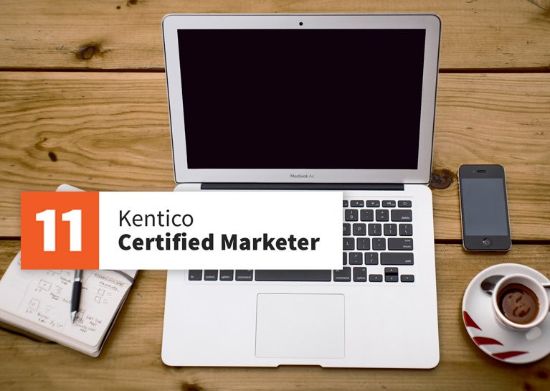
The world of digital content marketing is changing, and that change is coming fast. As technical development for content management systems (CMS) is progressing towards a more and more platform-agnostic future, it is vital that when companies are facing technology decisions today, they are undertaking those decisions with a focus on the aspects that will help them continue to reach their audience as industry and technology evolve.
Often, this kind of adjustment is more than a simple upgrade, and the considerations can seem a daunting prospect. Depending on where you are today, the change in conceptual approach to content management can be as tectonic a shift as any at the development level. But these changes also present amazing opportunities to rethink your entire marketing stack; to completely rework your content ecosystem, and to realize gains in efficiency and reach beyond what you might think possible with existing resources.
With a task like that on the horizon, it seems a good time to break down some of the most important things to consider if you are facing this decision now or soon. These may be surprisingly devoid of technology recommendations or feature matrices, but these are my five most important considerations for selecting a content management system:
- A comprehensive understanding of your content
- A future-proof foundation
- Clean content management
- The power to be accessible
- A strong balance of structure and governance
A Comprehensive Understanding of Your Content
What are your business, content, and marketing experience needs?
You must be looking at your entire content ecosystem from top to bottom, with eyes open to industry changes and possibilities coming up. To prepare for evolving channels, new devices and platforms, and the inevitable continued development inside content management systems, you will need to take an honest assessment of all the levels, processes, and people involved in your content ecosystem.
Consulting with an innovative group of content experts and developers, with all your company key players and developers involved, will help create an accurate snapshot and bring to light strategies, processes, assets, and tools you may need to optimize, remove, rework, or even create from scratch.
Taking a thorough and honest look will expose your specific needs now, and for the future, as well as how all the parts (content creators, editors, producers, developers - at every level) work together towards your goals - or how they do not. Additionally, assessing the nature of your assets and how they are managed overall - what you have, where it is, and how you use it - can reveal how new aspects in the future of CMS development will most effectively benefit your business.
A Future-Proof Foundation
How will your business use your new CMS to continue to evolve?
With the pace of technology continually advancing and the ways that we consume content changing just as fast, it is more important than ever that your CMS is built on a foundation that offers both flexibility and stability for years to come. A modern future-proof CMS needs to be flexible enough to adapt to new software, programming, and other developments, and powerful enough to quickly take advantage of new content channels and platforms. Your new CMS cannot be the reason your business is held back from creating new pathways for content creation, or its optimization, marketing, or your ability to track and report its impact. At the same time, it needs to provide a solid developmental foundation that will support your business as it grows in other ways.
Just a few years ago, digital marketing was focused almost entirely on website-centric strategies. As marketers, we spent insane amounts of time and energy just creating, maintaining, and optimizing strategies designed to increase visitors to the website or to revisit after leaving before converting. Now leads can come from a multitude of places, some so new their business models are in flux (think TikTok, or SnapChat, for instance). Your strategies now may include devices from watches, folding phones, streaming devices, and personal AI assistants, to name a few. Finding and building a future-proof balance of flexibility and stability will make all these twists and turns much easier to handle.
Clean Content Management
How will you use your new CMS to make everything easier for all your team members?
Consider the breadth of platforms we spoke of a minute ago, and how complex the processes of content management for so many options can quickly become. This is only one reason a decoupled content schema - one that is device-, channel-, and platform-agnostic - can make multi-channel content marketing much more efficient.
CMS solutions that might work best for this kind of complexity can range from fully headless content-as-a-service (CaaS) systems to ones that work in a more front-end based, conventional CMS model - but the guiding principle should be the same. The system in question must allow content to be edited independently of design. This does not mean that you cannot choose to adopt a CMS that still allows some level of control over the presentation of your content in certain channels – there is still usefulness to being able to create and manage landing pages and layouts. But if there is no way to access your content itself, independent of those layouts, then you are already at a disadvantage.
With a CMS modeled more as a repository for content than a direct website management interface, you will manage all your internal and external marketing assets more effectively, using a centralized organization. This can help make the recycling of all content types across the entire organization much less complex, and easier for your creative and production teams to manage their parts in the process.
A content-first approach - rather than one that is layout or design-dependent - can also lead to more stable processes and flexible paths for every level of content gathering and submission, while maintaining the simplest user experience for each of your players. This kind of modeling shows the most promise for adapting to the inevitable unknown “what’s next” platform that will change the marketing world, yet again.
The Power to be Accessible
How will your new CMS help make your digital experience available to everyone?
Accessibility is more than a compliance issue - and it’s also more than a moral issue. Of course, your site needs to be fully accessible for all visitors for the Americans with Disabilities Act (ADA) and many other governmental compliance issues. But, more than that, your entire digital experience needs to be easy to access by anyone, without any systemic or environmental obstacles, to achieve real and total optimization. With the number of Americans with disabilities comprising about 26% of all internet users, you would be unwise, to say the least, in missing the chance to optimize for that population alone, let alone for the inherent benefits that optimization brings to every potential user.
The simple answer is to say that you need to choose a platform that presents a compliant front-end. The issues with that approach are that what is compliant today may not be what is considered compliant in the future. We have seen this issue evolve along with all the others over the years, so there is plenty of historical context for us not to fall into the trap of considering this a static solution. It pays to take a step back, and target not simply the accessibility itself, but the control and flexibility to be able to achieve accessibility, whatever that turns out to be in the future.
Aside from the end-user experience, it is important not to forget about your team. Beyond the accessibility of both your CMS and the presentation layers that it feeds, it should provide an experience that’s as skill-level independent as it can be. This can make the entire content management and digital marketing process easier for everyone on the inside. Make sure that your next CMS offers a method to achieve a high level of democratization in content management to make this most efficient.
A Strong Balance of Structure and Governance
How will your new system help you delegate across your teams most effectively?
A term often used to discuss the operational processes involved in managing your content is “content friction”. This describes the obstacles faced when trying to create, edit, approve, publish, and maintain content across your organization easily and efficiently. Friction comes in many forms, and some of those could be completely outside the realm of the technology platform itself. But the last thing you want to do is introduce additional rigidity or obstacles when selecting your next CMS. That is not to say, though, that the best option is the shortest or easiest distance between conception and published content. Well-defined structures and repeatable attributes are fundamental to ensuring that content is reusable and accessible to many channels. Individual organizations may also need various levels of approval.
The right kind of guard rails can streamline content management when implemented intelligently. Eliminating unnecessary options from the interface can remove distractions or points of confusion from the process. Providing in-line guidelines for things like character length or image size can eliminate the need to refer to external documentation. Validation built into the process can do auto-checks on certain elements to ensure, for example, that links are not broken or that content does not exceed certain limits.
Workflow and collaboration tools can allow teams to effectively provide feedback on the content in a single place, rather than leveraging external editing tools before porting the content into the CMS. With all these tools in place, you gain the ability to democratize the contribution of your content even further. Non-technical contributors or subject matter experts that may otherwise be daunted at the idea of editing website content may now find a simple, streamlined, and purpose-built interface that they are comfortable using to contribute their expertise directly into your content stream without that content having to be solicited or submitted external to the process.
In what is bound to be a predictable theme at this point, it is important to identify a level of flexibility to align the interfaces, workflow, and governance rules of the content management system to the skills, processes, and gatekeeping needs of your organization. These may be minimal requirements to a small organization with a 3-person content creation team, but do not forget that the right combination of tools may expand the size of your “content creation team”.
To Sum Up…
It is tempting to look for solutions that take care of more and more things for you. The more open-ended options put more of the responsibility on your organization or your chosen partners to achieve your goals, and that can be daunting. Ready-to-go accessible layouts, pre-built approval workflows, and other turnkey solutions sound nice, but I can tell you from experience that when I encounter clients frustrated with their platforms, it is most often because the platform’s built-in solutions are too rigid to evolve with the times, and they find themselves fighting against the platform instead of being supported by it.
Quickly progressing developments in digital marketing continue to roll out and are affecting comprehensive change in content management systems all over. A focus on content and flexibility offers your business opportunities to pivot and grow into whatever new channels and tools come along, and to adapt and move in real-time to an ever-changing ecosystem for consuming that content.
Taking some time to assess where you are, to plan for where you want to be, and to optimize for all the right reasons can do more than make your company’s CMS transition optimal, it can also help your business turn a corner towards an exciting industry evolution that promises to support your growth for longer than many technology decisions you are likely to have made in your career.










